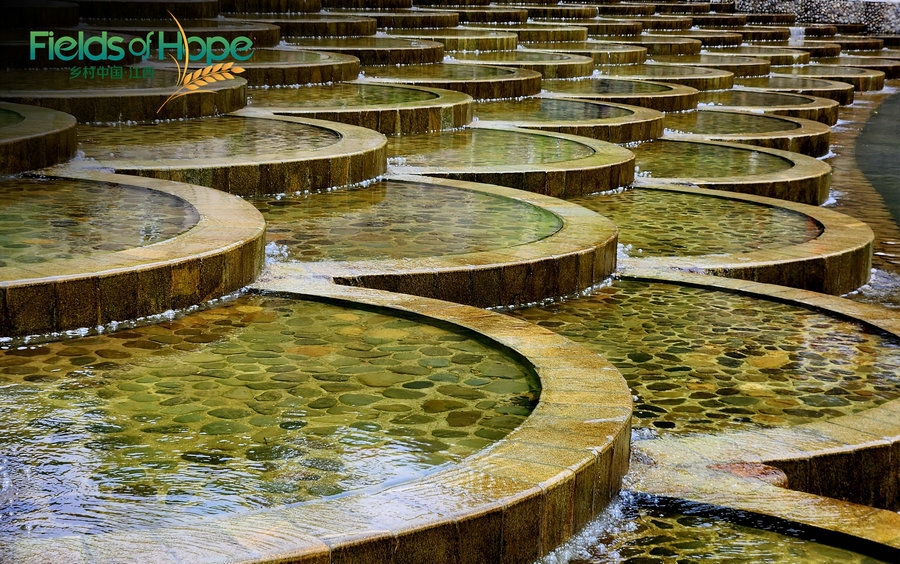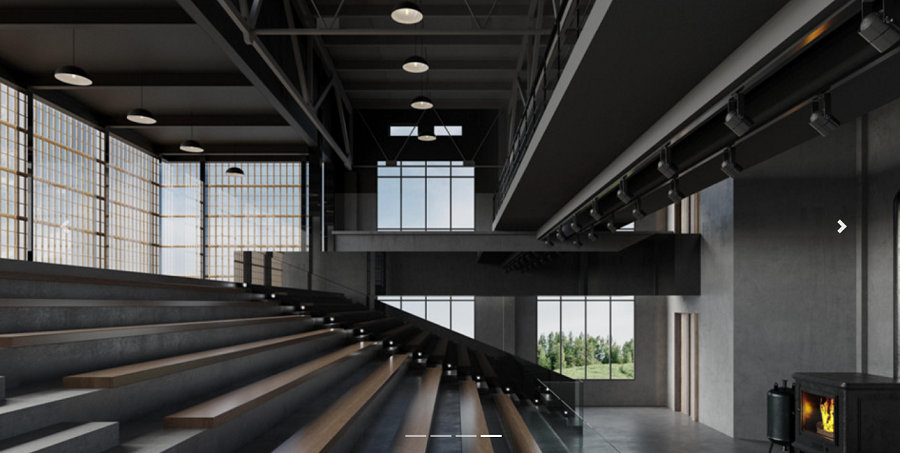Vessels are like fossils that keep record of the history. Therefore, to some extent, approaching an antique with sincerity is like entering into a dialogue with history. The earth and cracks on the vessels seem to narrate to us “Just leave them there.” How were they created? Who made them? Seeing them, these questions about their history will naturally come to our mind.
If you are fascinated with the history of porcelain, you can start your journey with these shards.
After heading forward for about 10 minutes, you will come to the first scenic spot—Temple of the God of Kiln, where people worship Tongbin, the God of Kiln. The saying goes widely that in the Ming Dynasty, Tongbin sacrificed himself to help fire the loong jar. It was in 1599 A.D. when the Imperial Kiln received order to make a huge loong jar. Because of the thickness and huge size, the work could hardly be done and the workers met with failure time and again, as the jar either deformed or cracked during the firing. Faced with such impossibility, the 32-year-old Tongbin jumped into the fire of the kiln and sacrificed himself in order to make it. Probably his deeds moved the gods. The next day, when opening the kiln gate, the workers saw in great delight a jar with beautiful white glaze and blue loong painting and they couldn’t but all kneel down in front of the kiln with mixed feelings of grief for Tongbin’s sacrifice and joy for the making of the jar.
Temple of the God of Kiln
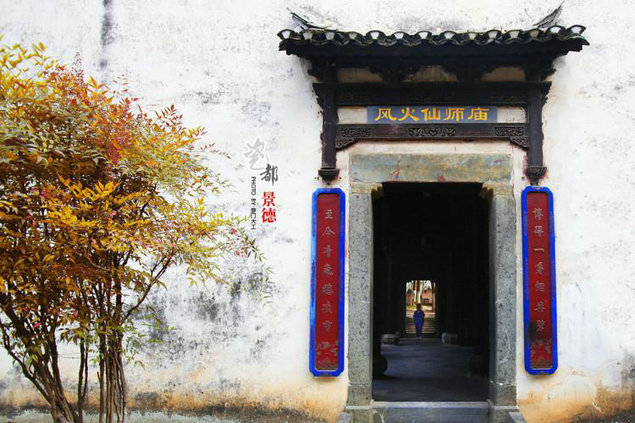
Due to the location of the Imperial Kiln here in Jingdezhen, relevant folk tales about porcelain-making rose up one after another. One of them was about Tang Ying who had supervised the Imperial Kiln for nearly 30 years, the longest supervision and with the most outstanding achievements of all the supervisors, leading Jingdezhen to the peak of technique development in Chinese porcelain-making history. For memorizing him and demonstrating the finest traditional Chinese culture of that period, Tang Ying Memorial was built.
Tang Ying Memorial
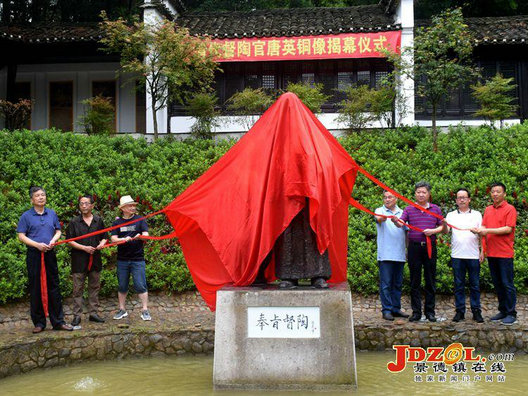
It was said that 90% of porcelains fired in the Imperial Kiln were destroyed in the selection for the perfect ones for the palace, from which we can imagine how strictly the selections were conducted. With such pursuit carried on, craftsmen today in Jingdezhen are still making perfection more perfect.
Time Polishes Techniques
Upon the mention of porcelain, everyone would think of Jingdezhen, but not everyone really knows her. What are common for the natives are very new to the outsiders, who would often wonder with curiosity “How is the clay thrown? How are the paintings drawn? What does a kiln look like?”
A visit to the Porcelain Hand-making Workshop would figure out for you all these mysteries. If you are interested, you can even have a try of it yourself by rolling up your sleeves, throwing the clay, and casting it into a bowl, a plate, a cup, a vase, or whatever you like.
The Porcelain Hand-making Workshop is a courtyard house formed of several column-and-tie bucket constructed buildings.
Stepping into the yard, you will see stretched in front of you a whole panorama of porcelain hand-making process with craftsmen busy treading the clay, throwing, shaping, glazing, and drawing, etc. You can even scrutinize and record with your camera all the procedures of turning a piece of clay into a piece of fine porcelain.
Porcelain Hand-making Workshop
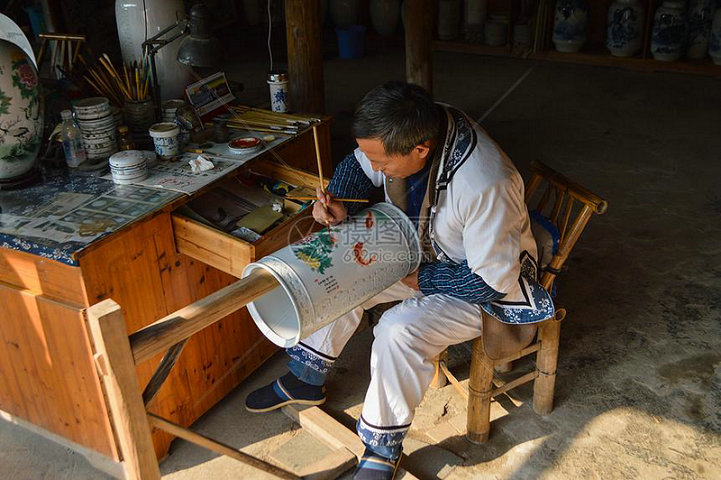
All the elder craftsmen demonstrating the porcelain hand-making process are inheritors of intangible cultural heritage with exquisite techniques.
Every day, Wang Yansheng (one of the craftsmen) makes dozens or nearly a hundred semi-finished clay shapes. With Wang Shenfang’s skilled hands, tea cups of equal number painted with camellia designs in cobalt are also produced. People, before coming here, may just regard Jingdezhen as an ordinary inland city, but if they can stay on for half a day, they will come to appreciate that what is especially extraordinary of this city is its citizens who “can make utensils comparable to those in the heaven” and they will feel in person of what is said there when witnessing the close link between the people and the clay. After the procedure of painting being finished, the porcelain is usually put into a huge vessel.
Following the procedures, I find the dozen-meter-long Zhen Kiln of the Qing Dynasty. It, with walls of gray bricks, black ceiling and lots of pine logs piled up along the wall, exudes a sense of solemnness.
First built in the early 18th century, Zhen Kiln is now the best-preserved ancient kiln in Jingdezhen. However, the firing stopped in 1995 and the kiln was on the verge of collapse. After having been fixed several years ago, it is ignited and put into use again.
Inside Zhen Kiln
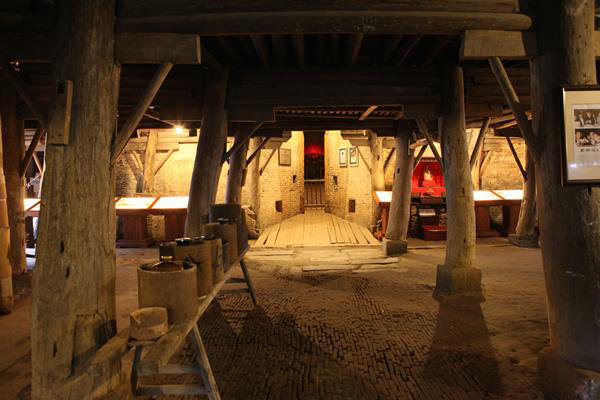
There are two stories in the kiln building, the ground floor is for saggar loading and taking while the second floor is for storing pine logs. In rainy days, a lamp would light up for the ground floor, with the warm light penetrating the gaps between the window and the firewood while the smell of kiln fire spreading all corners. Like their ancestors, workers today still solemnly carry on the procedures passed down to them.
Nocturne of Ignition of Zhen Kiln
On October 19th, 2009, Wang Xuechun, a famous hostess of CCTV attended the ignition ceremony of Zhen Kiln. She and the team of Zhengda Variety Show came to record how Zhen Kiln would break a new Guinness World Record. “The grayish biscuit would have dazzling luster after the firing.” After a three-day re-firing, time was up to open the kiln. Upon this occasion of the opening ceremony, famous experts and scholars of ceramics have been invited to the spot to sample and appraise the products.
Wang Xuechun Witnessed the Camellia Bowls fired in Zhen Kiln
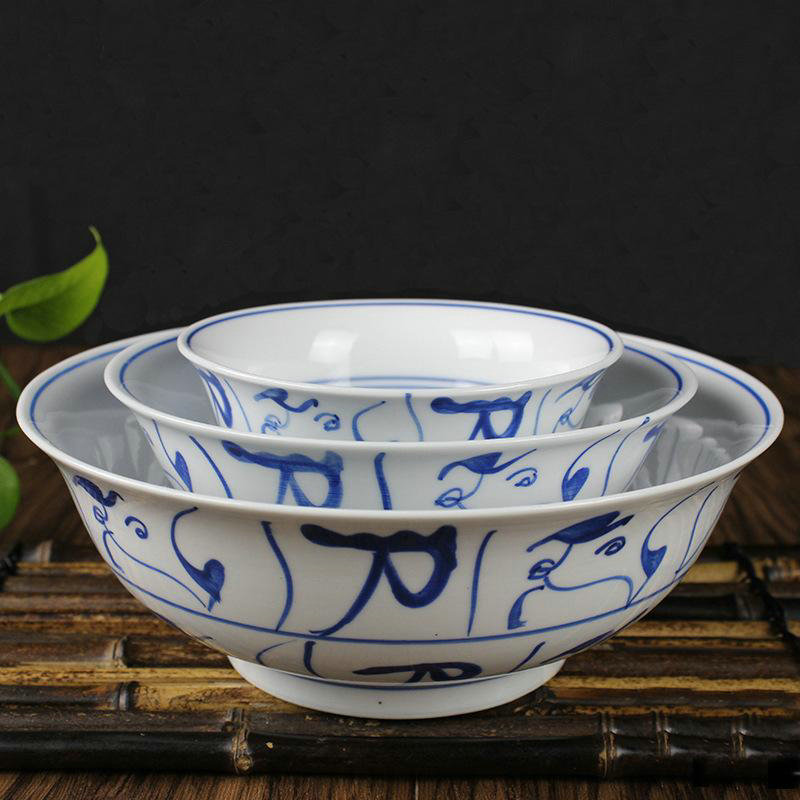
According to experts’ appraisal, the porcelain fired in Zhen Kiln was a huge success. Zhen Kiln was then hailed as the world’s largest wood-burning kiln on Guinness World Records.
Zhen Kiln was Hailed as the World’s Largest Wood-burning Kiln in Guinness World Records.
Time seems to have overlapped, the Zhen Kiln of the Qing Dynasty is not so much as an ancient architecture as a time-traveling machine.
This Kiln is ignited only twice a year but it can fire 20,000 pieces of porcelain at one time. The decision for it to fire only twice a year is for the sake of lengthening its life on the one hand and saving the firewood on the other hand, the staff explained. Though gas-fueled kilns are widely used now, the best porcelain is always from the wood-burning kilns. The reason is that the pine oil from the firewood could be released and infiltrates the porcelains while the temperature grows to 1300℃, bringing beautiful luster to the glaze.
Zhen Kiln is the best-preserved and the most valuable ancient kiln in Jingdezhen. On July 25th, 2000, it was listed as the Provincial Key Cultural Relic Protection Site by Jiangxi Provincial People’s Government. On March 5th, 2013, it was listed as the National Key Cultural Relic Protection Site by the State Council. Since then, a series of ancient kilns such as Gourd Kiln of the Ming Dynasty, Mantou (steamed bun-shaped) Kiln of the Yuan Dynasty, Loong Kiln of the Song Dynasty and the Imperial Kiln of the Qing Dynasty have been recovered, which together constitute a cluster of ancient kilns in Jingdezhen.

